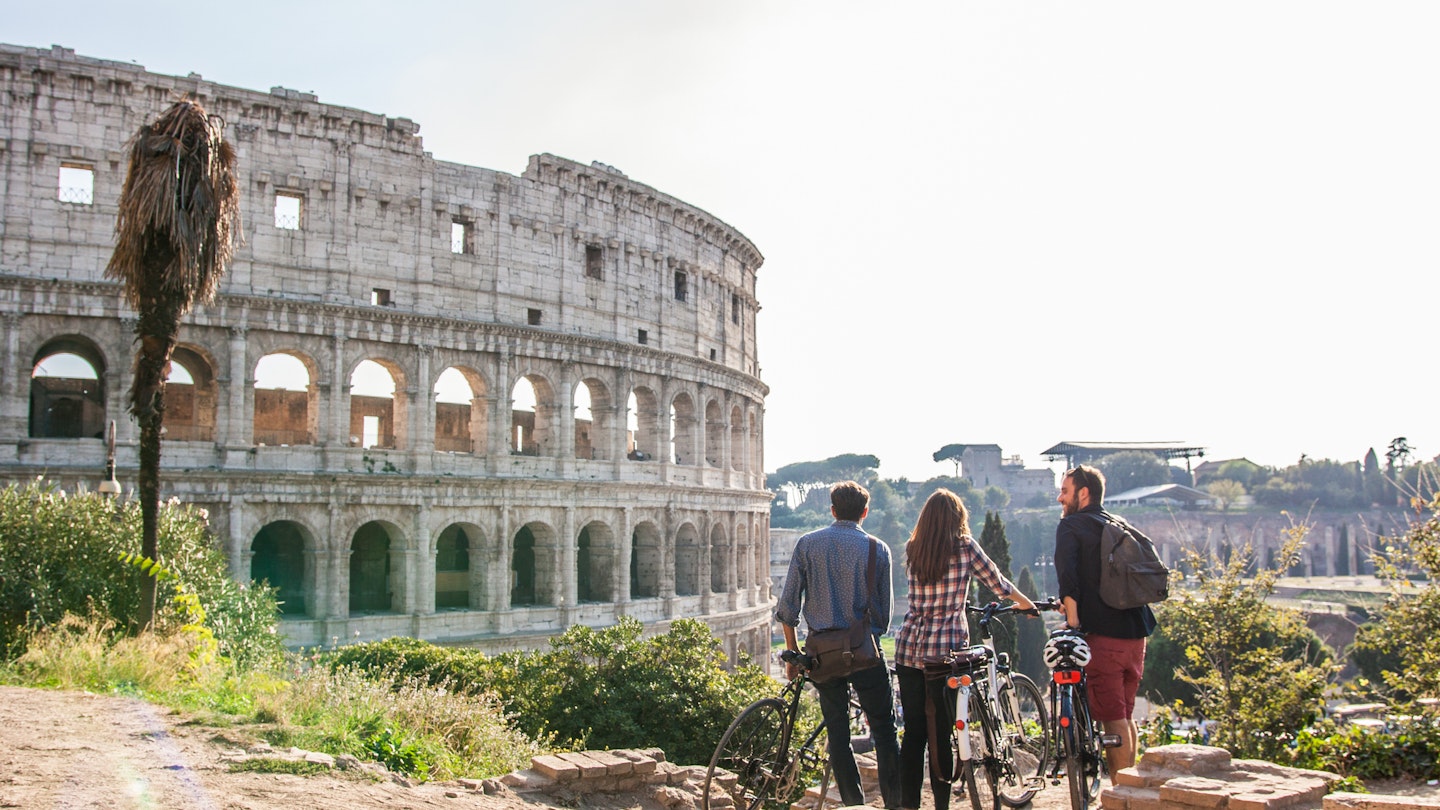Whether or not you find it easy to get around Rome will depend a lot on your expectations.
The most important thing to remember is that Rome is old. Like, very old. Most of the streets have not been designed to accommodate people, buses, cars, or bikes, and the underground network has been built in and around one of the most archaeologically rich locations on earth. The attractions we come to see are precisely the reason that it takes time to navigate through the city. Keep this in mind during your visit, and remember that any unexpected detours may turn out to be the highlights of your trip!
Explore the City with Mass Transit
Just like any major city, the Eternal City offers a comprehensive public transport network of buses, trams, and trains that will take you anywhere you want to go. Moreover, getting familiar with public transport can save time and enhance your experience. ATAC, the company that operates all mass transit in Rome, has undergone significant improvements in recent years. Visitors can download maps in multiple languages or use apps like Moovit for real-time updates.

Metro Line C is Best for Sightseeing
It’s helpful to note that metro lines A and B primarily travel north and south, while Line C heads further east, covering essential sights. Archaeological findings along the route have caused some delays in construction, adding a unique aspect to your journey as you witness the ongoing discoveries.
Trams Run East to West
Rome’s six tram lines facilitate travel primarily from east to west, offering charming views of neighborhoods such as Trastevere and Monteverde. Riding the trams can be refreshing, as they typically avoid heavy car traffic. However, maintenance on some lines may require bus replacements for specific routes, slightly inconveniencing your travel plans.

Rome’s Bus Network is Extensive
The bus network is one of the most extensive parts of Rome’s mass transit system, making it an invaluable way to explore the city. ATAC signage at bus stops helps guide you in the right direction, and real-time updates are accessible through helpful apps. Furthermore, don’t hesitate to ask locals waiting at the same stop for assistance; their directions can enhance your travel experience.
Tickets for Buses, Trams, and Metro Lines
Travelers can easily purchase farecards from machines or kiosks at metro entrances. The Tap and Go system allows for convenient contactless payments through cards or smartphones. Each ride is valid for 100 minutes, ensuring you have enough time to make connections. It’s advisable to have a backup ticket in case of system outages, as machines have limitations on change.

Walking: The Best Way to Experience Rome
Walking through Rome is both frenetic and enchanting, with iconic sights around every corner. Many ancient landmarks, such as the Colosseum, the Forum, and the Pantheon, are easily accessible by foot, allowing you to immerse yourself in the atmosphere of the city.
However, be prepared for congested areas filled with both foot and car traffic. To enhance your experience, consider visiting these sites during off-peak hours for a quieter exploration. The golden hour provides excellent lighting, adding to the beauty of your photos.
Driving in Rome: Proceed with Caution
Driving in Italy, especially in Rome, can be quite challenging. Romans navigate traffic with a unique style that might seem aggressive to outsiders. Consequently, it is advisable to leave driving to local taxi services, which are abundant and can easily be summoned.
Accessible Transportation Options
Rome’s infrastructure continues to improve for individuals with disabilities. ATAC provides detailed information about metro, tram, train, and bus accessibility. Many buses are equipped with boarding platforms, and most metro stations include elevators and tactile maps for visually impaired travelers.
While some major attractions offer special access for visitors with limited mobility, navigating the city’s cobblestone streets can still present challenges. It’s essential to plan your visits thoughtfully, particularly if you’re traveling with strollers or individuals needing mobility assistance.
This article provides insights into navigating Rome efficiently, ensuring a fulfilling travel experience.





